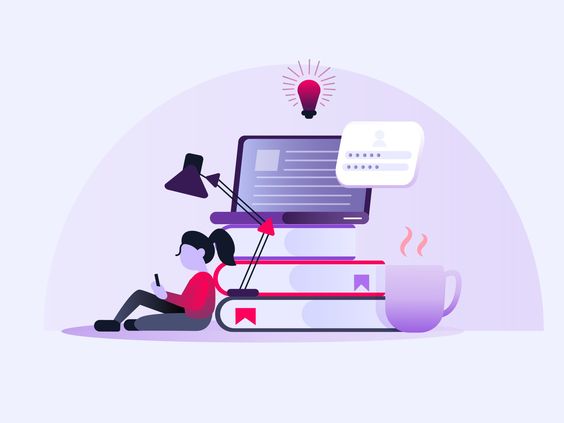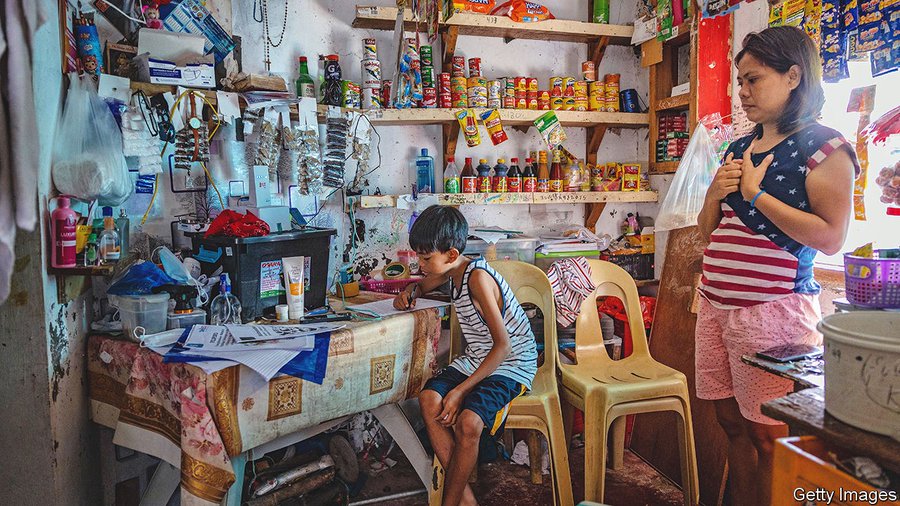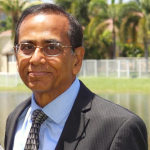
Instead of acknowledging this reality and keeping students in class, American public schools embarked on a disastrous experiment in remote learning that persisted in many places even after the vaccine rollout.
Nazarul Islam
I am a high school teacher, having taught in many lands, cultures and diverse communities. I always believed that a teacher is only as effective as his ability to understand where his student is. Educators are expected to inspire you, they entertain you, and you end up learning a ton even when you don’t know it
When things are not being done right for our school children, I am distressed. And, I have good reasons to be do disturbed. Imagine that it’s September 2020 and you’re teaching at a middle school that has gone online.
Miraculously, all of your students have functioning laptops and can join class remotely. You’ve checked your equipment with a colleague, who assures you that the audio feed is clean and the lighting in your apartment does not make you appear demonically possessed. You have a slideshow and a digital worksheet ready to go on the flora and fauna of different climate zones.
You start the lesson by marking attendance. This process, which usually takes a few seconds, now lasts five minutes because you have to remind almost every student to turn on their cameras. Most will turn them back off after you share your screen because they’ve realized you can’t navigate a slideshow and monitor 17 different video feeds simultaneously.
Next – You pause after slide three to ask what you think is a basic question about the material, just to make sure everyone is paying attention. You are greeted by absolute silence. You call on one student by name, but someone else says she’s in the bathroom.
Another student is having problems with his Wi-Fi. A third’s microphone doesn’t work (it never works). It’s 15 minutes into the lesson and you’ve barely covered three slides. The students have six more online classes to sit through before the school day ends.
Even at the beginning of the pandemic, it was obvious that remote learning was uniquely ill-suited for children and teenagers, who are easily distracted, prone to online mischief, and unlikely to pay attention to academic material from their living rooms. Even adults struggle with corporate conference calls and lengthy Zoom meetings.
Instead of acknowledging this reality and keeping students in class, American public schools embarked on a disastrous experiment in remote learning that persisted in many places even after the vaccine rollout.

As the consequences of school shutdowns become obvious and undeniable, a new media narrative has emerged. Pandemic-era learning loss was a tragic but unforeseen consequence of an unprecedented public health crisis.
Shutting down schools, says The Economist, “was worse than almost anyone expected.” In an otherwise sobering article on the collapse of public education in the pandemic era, The Atlantic tells us that learning loss “is far greater than most educators and parents seem to realize.”
In truth, these problems were completely predictable. Indeed, they were acknowledged from the very beginning of Covid, albeit sotto voce. Many studies have examined the disproportionate impact of school closures on poor and minority students. An equally telling but under-discussed fact is that even at the height of the pandemic, when alarmists were calling for total school closures and blithely assuring skeptics that kids were “resilient,” students from affluent families were usually able to stay in school.
In California, Governor Gavin Newsom was widely criticized for a night out at an upscale restaurant while most of the state remained under lockdown. A more galling example of official hypocrisy is his approach to education.
In United States….the governor of California had imposed public school shutdowns, Newsom’s children continued to attend in-person classes at a local private school. Affluent and well-connected families across the country made similar decisions. As public schools shut down, private schools remained open and enrollment surged.
Those who could afford to send their kids to private school clearly understood the value of in-person instruction, even if they were reluctant to acknowledge this publicly.
It is all but forgotten now, but at the height of the pandemic, school shutdown advocates embarked on a clumsy media campaign against the very idea of learning loss. The New York Times had credulously quoted an anti-testing activist (no ulterior motives there!) in a long, chin-scratching meditation on the case against measuring pandemic learning shortfalls.
Pundits, union officials, education experts, and teacher organizations cautioned against use of the term “learning loss” because it was unduly pejorative. In retrospect, the motive behind these linguistic gymnastics is obvious. School shutdown supporters knew their policy would yield disastrous results and wanted to do everything possible to obscure that fact.
Beyond the usual academic indicators, public schools are now contending with chronic absenteeism, a youth mental health crisis, and a wave of disciplinary problems.
The pandemic era lowering of standards reached its sad culmination last summer with Oregon’s decision to waive basic math and reading requirements for high school graduation. You do not need to be an advocate of relentless, No Child Left Behind-style testing to admit that schools need benchmarks to ensure they’re actually teaching something.
And just about every benchmark available shows that students have suffered dramatic educational setbacks from remote schooling.
Beyond the usual academic indicators, public schools are now contending with chronic absenteeism, a youth mental health crisis, and a wave of disciplinary problems.
Missing students and behavioral outbursts occur because kids who have lost a year or more of school are unaccustomed to regularly attending classes, sitting still, and paying attention. The study habits of an entire generation of students have atrophied online, a loss that will persist for the rest of their academic careers and beyond. Meanwhile, kids deprived of normal social interactions naturally suffer from feelings of isolation, alienation, and loneliness. None of these findings should come as a surprise.
The most striking thing about remote learning in the United States is how lengthy American school closures were compared to peer nations. Progressive wonks and education activists are usually enthusiastic boosters of European practices. When Covid hit, they became strangely incurious about foreign schools. Social democratic Sweden kept its schools open for almost the entire pandemic.
Other European countries confined their shutdowns to the viral winter months. None of these schools experienced mass student death or out-of-control community spread. Abbreviated school closures in Eastern European countries like Hungary also disprove the notion that American schools lacked the financial resources to reopen safely.
The problems of remote learning can be attributed to a lack of “teacher training, appropriate software, laptops, [and] universal internet access.
Why did American schools fare worse than their European counterparts? Several factors played a role. The intransigence of American teacher unions, who insisted on absurd (and often worthless) hygienic measures and dragged their feet on reopening even after vaccines were widely available, certainly played a part. A naive but quintessentially American faith in technological solutions probably influenced the decision to stay online (I have a vivid memory of my elementary school unveiling laser disc players, a now-forgotten precursor to DVDs, in every classroom to great fanfare).
Even now, NPR hopefully suggests that the problems of remote learning can be attributed to a lack of “teacher training, appropriate software, laptops, [and] universal internet access.”
Others have laid the blame at parents’ feet. Public opinion surveys reveal that many poorer and minority families were extremely reluctant to send their kids back into the classroom, a finding that could explain the disparity between private and public school pandemic policies. Yet many European parents surely felt similar anxieties. Why were the United States’ school closures such an outlier?
The decisive factor behind lengthy school closures was probably the toxic political climate of the Trump era. On July 7, 2020, Trump had fatefully tweeted that “SCHOOLS MUST OPEN IN THE FALL!!!” This turned the question of reopening schools into another partisan flashpoint. Union opposition to in-person teaching hardened. Teachers in a heavily left-leaning profession were reluctant to align themselves with a divisive Republican president.
Experts and technocrats softened their criticisms of school closure policies. Media figures seized on Trump’s call to reopen schools as just another example of his cavalier approach to the pandemic. Many of these people were quite comfortable sending their kids to private and elite public schools that remained open. However, they soft-pedaled their reservations about remote learning until Trump was safely out of office.
Covid fears are often correlated with partisan loyalties. In an interesting reversal of American political polarities, right wing populists sought to close Swedish schools while the ruling Social Democratic party insisted on keeping them open. Had Hillary Clinton won in 2016, it is possible to imagine an angry coalition of conservative public school critics demanding closures while touting homeschooling and “pandemic pods” as alternatives.
Once Trump endorsed school reopening, however, the likelihood of public school teachers, administrators, union officials, and left-leaning commenters following suit was virtually nil.
Trump is gone. The unutterable truths about remote schooling can now be uttered. For the current generation of students, reopening classrooms will not restore a childhood marred by lengthy school closures, onerous masking requirements, and other pandemic disruptions.
As we grapple with the academic, personal, and psychological consequences of school shutdowns, we must be clear-eyed about the costs of keeping kids out of school. And if, God forbid, we face a similar emergency in the future, we should commit to keeping schools open at all costs.
____________________
 The Bengal-born writer Nazarul Islam is a senior educationist based in USA. He writes for Sindh Courier and the newspapers of Bangladesh, India and America. He is author of a recently published book ‘Chasing Hope’ – a compilation of his articles.
The Bengal-born writer Nazarul Islam is a senior educationist based in USA. He writes for Sindh Courier and the newspapers of Bangladesh, India and America. He is author of a recently published book ‘Chasing Hope’ – a compilation of his articles.